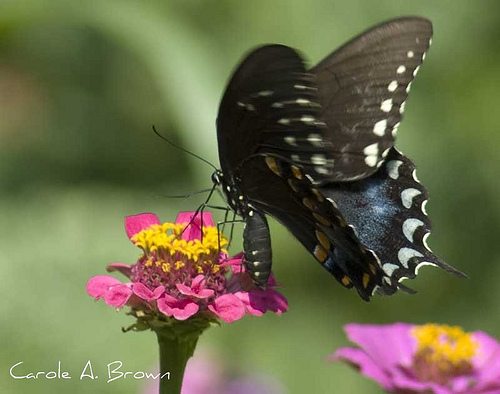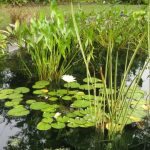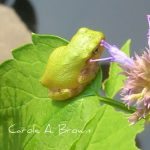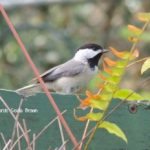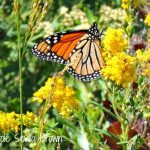We got over 1 1/2 inches of rain overnight, and although it is slightly cooler, it’s still really humid. The sticky, sweaty, hard to breathe kind of humidity. But that did not stop several tenacious Eastern Tiger Swallowtails from spending some time in the garden today.
Eastern Tiger Swallowtails are a type of butterfly that are native to the eastern United States. They’re easily recognizable by their distinctive black and yellow stripes and large size. They’re one of the most common and easily recognizable butterfly species in the eastern US, and are often seen flying around gardens, parks, and forests.
Eastern Tiger Swallowtails are known for their large size and distinctive appearance. They can have a wingspan of up to 3.5 inches, making them one of the largest butterflies in the eastern US. They’re also known for their bright yellow and black stripes, which make them easy to spot even from a distance.
When it comes to diet, Eastern Tiger Swallowtails feed on nectar from a variety of flowering plants. They’re also known to feed on tree sap and rotting fruit, which provides them with the necessary nutrients to fuel their migration.
If you’re looking to attract Eastern Tiger Swallowtails to your yard, there are a few things you can do. First, make sure you have plenty of nectar-rich plants for them to feed on. This could be anything from wildflowers to butterfly bushes to herbs like parsley and fennel. Additionally, you can plant host plants for their larvae, such as cherry and tulip trees.
There are also some Black Swallowtails, some Summer Azures, and some Monarchs.
Today’s bird list includes Carolina Chickadee, Tufted Titmouse, Cardinal, American Goldfinch, Robin, Carolina Wren, House Finch, Mourning Dove, Rock Pigeon, Catbird, Mockingbird, and two Ruby-throated Hummingbirds.
Yesterday there were 3 hummingbirds. It’s the time of year when I’m constantly wondering if they have decided to begin their amazing migratory journey.
Still in bloom: Joe Pye, perennial sunflower, cup plant, pink phlox, white phlox, indian paintbrush, and ironweed. The goldenrod is nearing bloom but has not yet.
More From Ecosystem Gardening:
Submit your review | |

